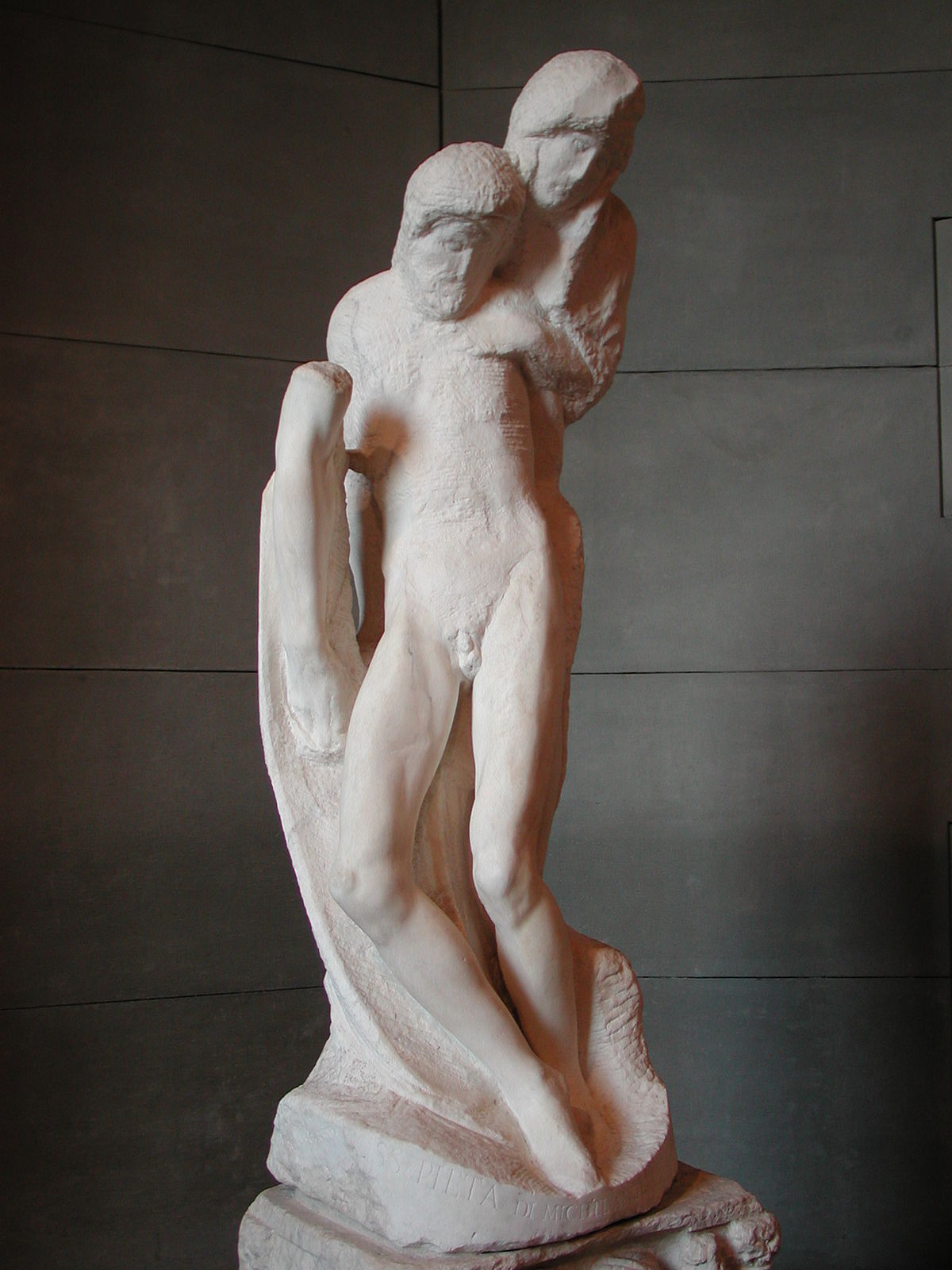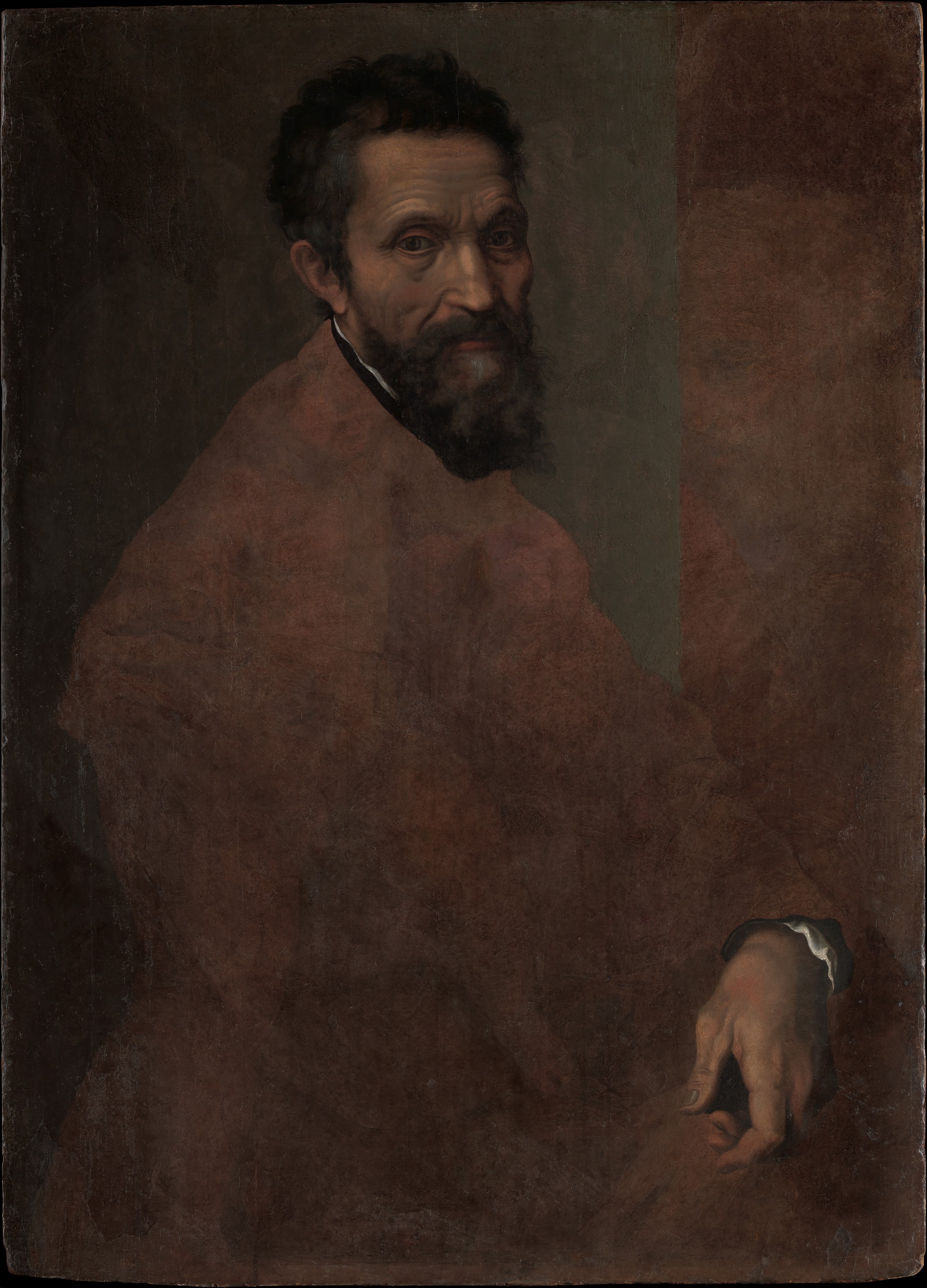The Rondanini Pietà is a marble sculpture that Michelangelo worked on from the 1550s until the last days of his life, in 1564. It is housed in the Museum of Rondanini Pietà of Sforza Castle in Milan. This final sculpture revisited the theme of the Virgin Mary mourning over the body of the dead Christ, which he had first explored in his Pietà of 1499. Like his late series of drawings of the Crucifixion and the sculpture of the Deposition of Christ intended for his own tomb, it was produced at a time when Michelangelo's sense of his own mortality (and with it his spirituality) was growing.
The Rondanini Pietà was begun before the Deposition, although in his dying days he hacked at the marble block until only the dismembered right arm of Christ survived from the sculpture as originally conceived. The spectral, waif-like Virgin and Christ are a departure from the idealised figures that exemplified the sculptor's earlier style, and have been said to bear more of a resemblance to the attenuated figures of Gothic sculpture than those of the Renaissance. It has also been suggested that the sculpture should not be considered unfinished, but a work in a continuous process of being made visible by the viewer as he or she moves around to see it from multiple angles.
When viewing the sculpture from certain rear angles, it looks as if Jesus is holding Mary up with his back, instead of Mary cradling Jesus. It is said that Michelangelo carefully crafted it this way to represent how Jesus's spirit might actually have been comforting Mary in her loss.


 Michelangelo
Michelangelo